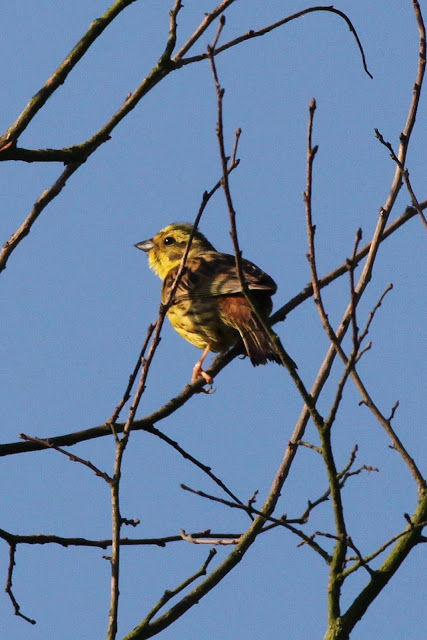There are still great example around. Some friends recently went to Highgrove where Prince Charles has been working on establishing his own Wildflower Meadows and with his Coronation Meadows celebrating 60 years of the reign of Queen Elizabeth 2nd rightfully establishes meadows as a key resource that quite frankly has been significantly under-valued.
 |
| Yellowhammer |
 |
| Meadowsweet |
What was more fascinating was what happened when you went a bit further than the average diver could easily fin in a dive or did an anchor drop when most operators stuck to the fixed buoys. Suddenly you found even more fish! They had all escaped to a little haven where the divers didn't go. To a certain extent that is what seems to happen in the few places we have left as wildlife reserves but which aren't frequently visited. The less we have the more likely it is that these havens will have more human visitors than the wildlife are happy to hangout with. I free truly privileged to live somewhere where the biodiversity is quite frankly stunning. Long may it continue.
We heard last week that the application for a chicken farm in close proximity to Piddle Brook Meadows has been withdrawn. It may only be temporary, in which case, if it is re-submitted we will judge the new application from the same applicant or another on its merits. However, whatever happens everyone should be aware of just what might be lost if developments that are inappropriate are made in this area.
Our local biodiversity might be lost forever.
These photos were all taken on a single 35 minute morning walk in July.
 |
| Juvenile Goldfinches |
 |
| Whitethroat? |
 |
| Closeup of Juvenile Goldfinch |
 |
| Closeup of Juvenile Goldfinch |
 |
| Possible Reed Bunting or something else! |
 |
| Whinchat (Male) |
 |
| Whinchat |
 |
| Yellowhammer |
 |
| Yellowhammer |
 |
| Yellowhammer |
 |
| View of Upton Snodsbury Church from Piddle Meadows |
 |
| Dappy Hog |
 |
| Greenfinch |
 |
| Piddle Brook from the Bridge over the road into Naunton Beauchamp |
Whilst planners might be content with a few wildlilfe "corridors" it is possible that for the wildlife itself there needs to be some critical mass to make them effective. Biodiversity is key.



































